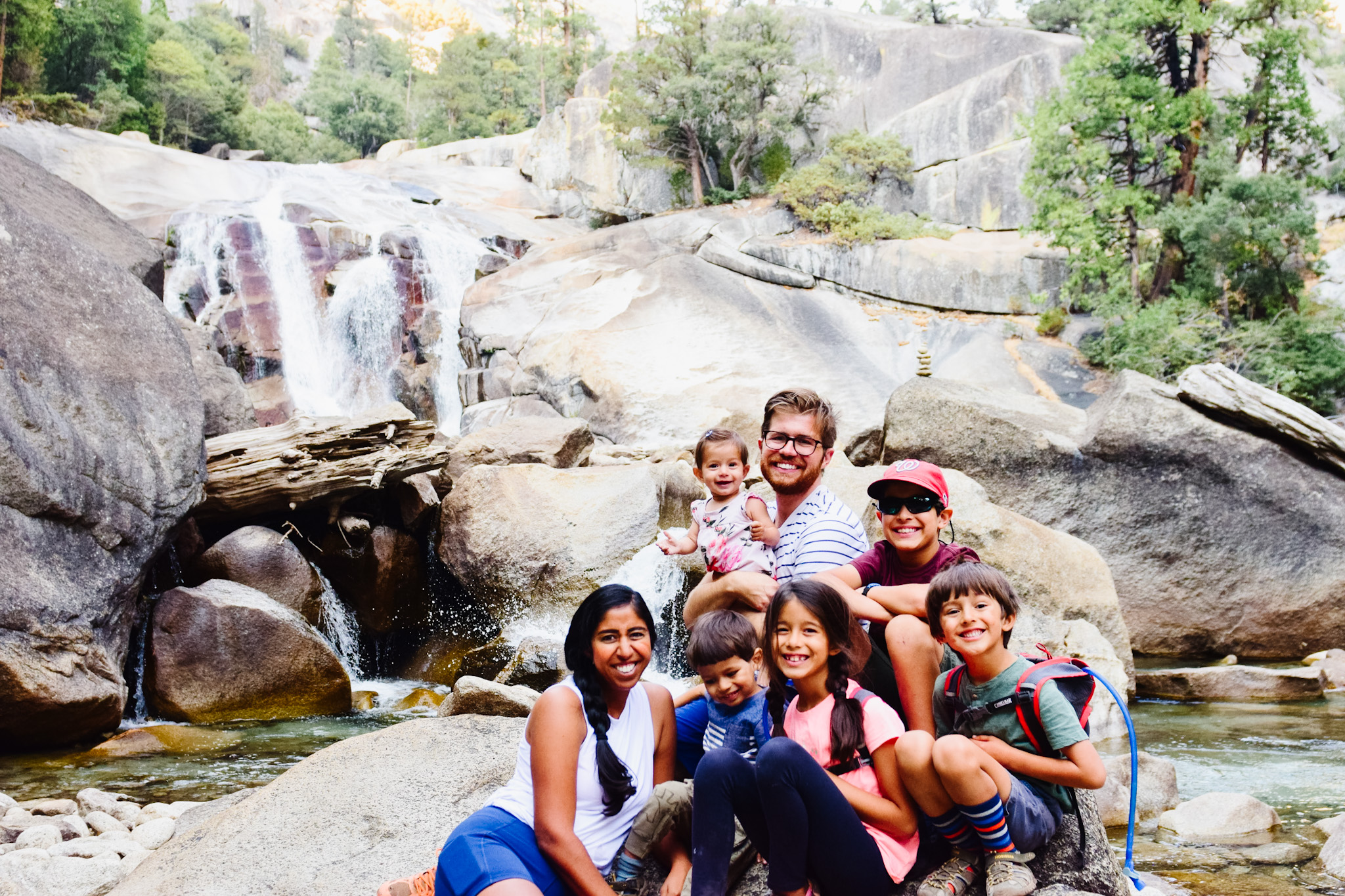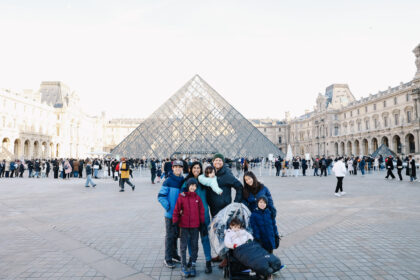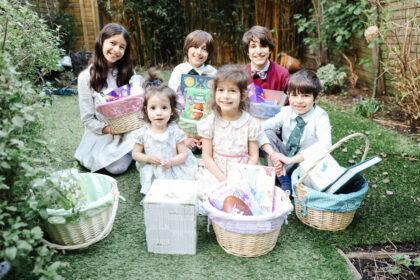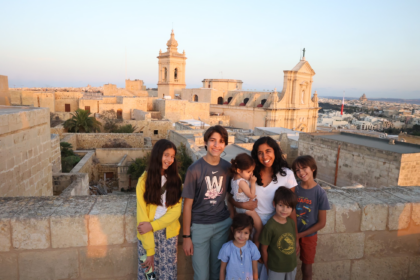We can’t fail to act against racism and also act surprised by it. We can’t agree to disagree about racism and white supremacy. Little steps to dismantle them aren’t enough; we must take huge steps. Raising antiracist kids can help.
I’ve seen a lot of comments floating around about how we need to be better at disagreeing with kindness, and that we need to leave space for other opinions and perspectives. Which is true!
However, racism is not one of those issues. White supremacy is not one of those issues. These are clearly insidious and wrong and it is incumbent upon us to clearly denounce them.
Why It’s Important to Discuss Antiracist Action with Kids
Kids are very impressionable. So while even young kids will have started to be conditioned to racial bias as young as 2-3 years old, they are also especially capable of reprogramming and overcoming those biases. It is so important that we start this work young, while it’s easiest to develop neural signals to recognize bias and racism and act against it.
Also, babies as young as 6 months old start to recognize differences in skin color. If we don’t actively appreciate and acknowledge and celebrate those differences, kids start attributing reasons for them. We want them to know that differences are beautiful, and are not the cause of other disparities.
This article also has good information on why it’s important to discuss racism with kids.
Take Big Steps to Racial Equity
Anytime racial injustice comes to a head, I hear a lot of people sharing that we need to spread more love and less hate. We need to take those small steps of goodness by spreading kindness to our neighbors.
But the thing is, while those kind acts are wonderful, they don’t actually help with antiracist work. In fact, they can even hinder it sometimes. Here are some reasons why:
- They continue to help people who are around you, who are probably like you. Especially if you’re a white person, this is a problem.
- They make us think that we’ve done our part, and we get complacent.
- Niceties don’t actually impact how racism works. As Ibram X. Kendi notes in his book, when it comes to racism, things often only change when policies change. Once policies change, behaviors often follow, as opposed to the other way around.
Because of that, we should be working toward those big steps for racial equity, not just focusing on spreading random acts of kindness around us. We need to actively look for injustice and racism and try to impact the systems and leadership that perpetuate it.
Ideas for Antiracist Action for Kids
With that in mind, I’ve been brainstorming a few antiracist actions for kids. We need to be having these conversations with even young children, and I hope these are helpful to your family. While they’re primarily geared toward white children and families, some may apply to families of color, as well. I hope they are helpful to you as you prepare for antiracist action with kids.
Raising Antiracist Kids: 8 Simple Antiracist Actions You Can Take
1. Discuss terminology.
It can get really confusing when you hear a lot of words you don’t understand, and that’s true for kids, too. With antiracist work, it’s especially important to review terminology to make sure you’re on the same page.
Antiracist Resource
This glossary of antiracist terminology is extremely helpful in knowing the appropriate terminology to use and the best ways to discuss racism. And this First Name Basis podcast episode is excellent for learning how to start conversations about racism with kids.
Sample Questions
What do these words mean?
- Racism
- Bias
- Privilege
- White supremacy
- Antiracist vs. not racist
- Diversity
- Systemic racism
- Implicit bias
- Etc.
2. Consider your own biases.
The first step to rooting out racism is to recognize it in yourself. It’s important to notice those culturally conditioned biases and responses without shame so that we can work to change them, especially while they are still young and very malleable.
Antiracist Resource
Read Like A Rockstar has a fantastic guide for talking to young kids about racism. It’s a great way to help kids understand that societal programming without shame, and actively work to overcome it.
Sample Questions
- What privileges do you enjoy? How do they make it easier for you in school, sports, etc.?
- Who are your closest friends? What do they look like? Do they have similar or different backgrounds? What types of homes do they live in?
- What kind of student is good at reading/math/sports?
3. Read inclusive and antiracist kids books with accurate history and also about everyday joy. Diversify your bookshelf.
Books don’t do antiracist work in and of themselves, but they’re one of the best ways to help young children understand the importance of that work. Make sure you read a diverse set of books that showcase both accurate history as well as everyday life and joy for people of various skin colors, backgrounds, upbringings, religions, etc.
When reading the books, make sure you leave an open line of communication for discussion. It’s also a great opportunity to discuss further action.
Antiracist Resource
Either the A-Z Global Children’s Book Club or the 2021 monthly Global Children’s Book Club are wonderful, free resources for this. There’s also this list of books about women leaders, inclusive Thanksgiving books for kids, and Juneteenth and Black history books. And here’s an incredible list of diverse picture books from 2020!
Sample Questions
- What types of books do you typically choose? What do the characters look like?
- Which characters are happiest in your favorite book? Are there any who struggle? Which ones are sad?
- What kind of book do you think of when you imagine a Black boy? An Asian girl? A white child who does not identify as a boy or a girl?
- What types of families do the children in the books you read have?
4. Recognize and call out racism in your home/school/community/country.
Have an open and honest discussion about when your child has witnessed racism. (Note: this is not generally a good idea for BIPOC children, as it can be really triggering. Please tread carefully and protect them.) Have they seen it in school? What about at a religious event? On a sports team?
This is also important to do in larger spheres. Where does your city advertise classes? How is the leadership of your country behaving, and is there something they should be doing differently?
Antiracist Resource
This is a fantastic, clear, simple book about racism that will help kids recognize it when it occurs.
Sample Questions
- Which kids get called on to answer questions the most in class? Which ones never really answer questions?
- Are there any kids who get sent to the principal’s office? Or are there any kids who you feel like your teacher is constantly frustrated by?
- Are there any kids you feel get in trouble more on your team or in your class?
- Can you write to one of your representatives to encourage a specific antiracist action and lawmaking to start to effect systems of change?
5. Antiracist kids role play to advocate for those who are marginalized.
After having straightforward discussions, kids often feel an innate need for justice to be served. They often have a strong sense of equity and fairness, and want everyone to be treated in an impartial way. They often want to speak up for those who are marginalized and hope to rise to their defense.
Still, it can be difficult to come up with the right words in the moment, or to even recognize when to say something. You can help your child by role playing some familiar scenarios to practice how to respond.
Antiracist Resource
Teaching Tolerance has some great role play resources that can be adapted to young children.
Sample Questions
- Imagine your friend group at school includes only people who look like you. What can you do to make it more inclusive? Practice inviting someone new to play.
- Consider if there’s a student who gets in trouble more than others in your class. What does that student look like? Is there something you can/should discuss with your teacher? How would you do it?
- Imagine someone in your class pulls their eyes to the side to make them slanted. What would you say to this child?
- Think about if you’re driving to sports practice with a friend and you see some apartment buildings. Your friend says, “All the Mexicans live there.” What would you say to your friend?
- You hear someone on the playground saying that another student’s skin looks “dirty” because it’s dark. What do you do?
- One student is making fun of another student’s lunch and says it looks “disgusting.” Should you intervene?
6. Recognize whose land you are on.
Unless you are indigenous, if you live in North America, the land you are on is most likely stolen. Your land is most likely not “your” land. When we recognize we are visitors and guests in a space, we choose to act differently in terms of how we treat our hosts and also our space. We treat our freedoms differently when we recognize that it’s not “our” space to begin with.
Antiracist Resource
This map shows the tribes native to most North American lands. You can go look up whose land you are on, both in terms of your home and while traveling!
Sample Questions
- What land do you live on? How did your family come to that land?
- What does the word indigenous mean?
- Have you ever heard of a refugee?
- How can we help someone whose land has been taken and exploited?
- How can we help someone who does not currently have a safe home and needs to move to a new building/city/country?
7. Talk to a family member or friend about what you are learning.
It is so important for those who are learning to help others learn, too. While you are unlearning biases and rooting out racism in yourself, it is crucial to share those learnings with others (especially if you are white) so that they can start the process, as well. You and/or your child can discuss with a family member or friend.
Antiracist Resource
Here are some good tips for how to talk to family and friends about racism. It’s geared to adults, but can be useful for kids, too.
Sample Questions
- Did you know that our home is on the land of ___ indigenous tribe? What land do you live on? How can we support those tribes?
- I read a book where a Black boy was the main character. Have you ever read a book like that?
- Today I learned what the word privilege means, and recognized a privilege in my life. Do you have any privileges in your life?
8. Come up with a sustainable plan.
This work is difficult and can be exhausting. It’s easy to start out with enthusiasm but then feel fatigue and also guilt for having those biases and not addressing them sooner. This can lead to indecision and inaction. It is so important to come up with a sustainable plan, one that is long-term and long-reaching. One that will effect true change in your home and community.
Antiracist Resource
Oh Happy Dani’s cycle of inaction framework is very useful to determine where your sticking points are and how to move past them.
Sample Questions
- What is one thing I can do on a daily/weekly/monthly basis to continue in my antiracist work?
- How do I feel when doing one of the things from this list? Am I trying to do too many at once?
- How can I help other people become antiracist, too, so that we can all make more of an impact together?












[…] Use the day as an opportunity to not just have a one-time discussion with kids about race, but as a chance to start some continuing conversations. Use it as a chance to explain systemic racism to kids, and also to consider some simple antiracist kids actions. […]
[…] you’re unsure where to start, here are 8 simple antiracist actions for families as you begin your […]
[…] 8 Simple Antiracist Actions for Families […]
[…] 8 Simple Antiracist Actions for Families […]
[…] Use the month as an opportunity to not just have one-time discussions with kids about race, but as a chance to start some continuing conversations. Use it as a chance to explain systemic racism to kids, and also to consider some simple antiracist kids actions. […]
[…] library, I can find a read aloud on YouTube. We can watch videos about other countries, or about systemic racism. We can watch speeches or hear about lives different from our […]
[…] Raising Antiracist Kids: 8 Simple Actions You Can Take […]
[…] Raising Antiracist Kids by Local Passport Family […]
[…] Here are 8 simple antiracist actions you can take with kids. […]
[…] Shredded paper makes terrific packing material. Consider sending a gift to a loved one – perhaps something that encourages antiracist action. […]
[…] 8 Antiracist Actions for Kids […]
[…] 8 Antiracist Actions for Kids […]
[…] Raising Antiracist Kids by Local Passport Family […]
[…] 8 Antiracist Actions for Families […]
[…] How to Choose a Family Friendly Holiday […]